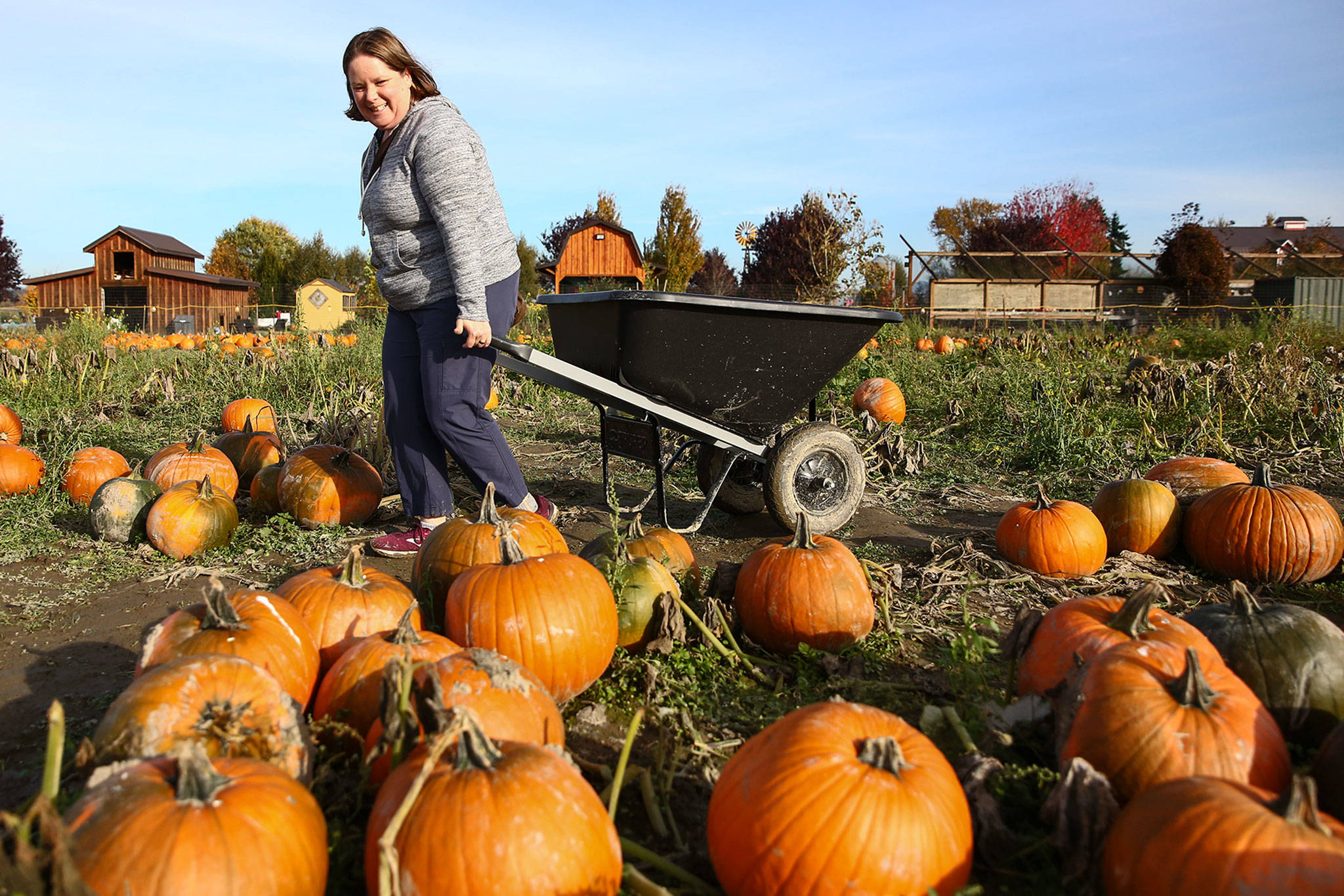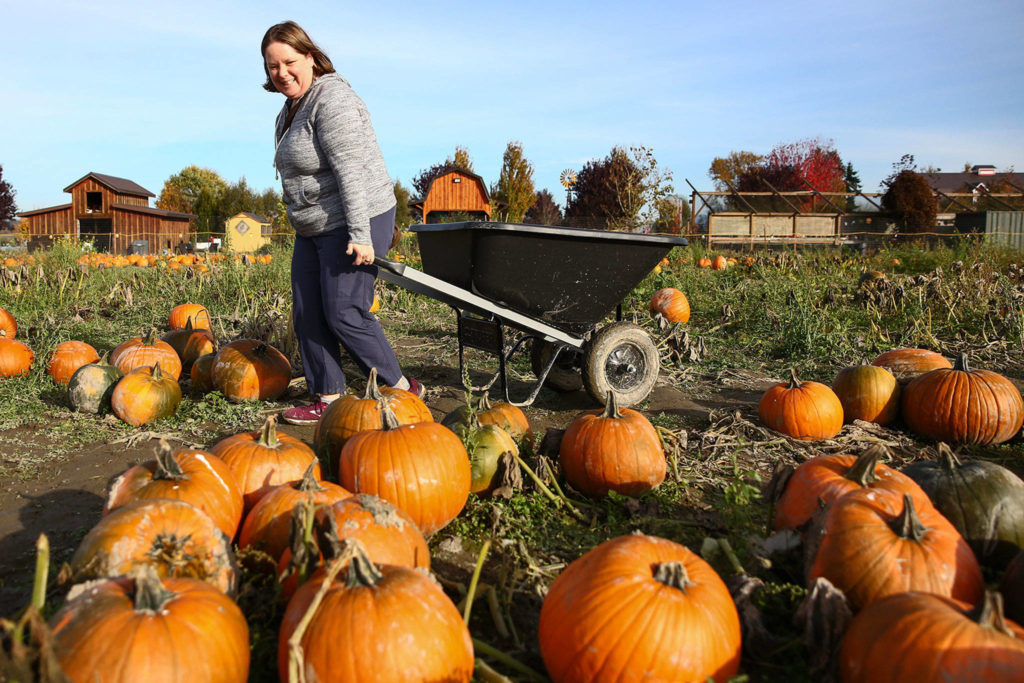LAKE STEVENS — The Snohomish County landscape is changing in the name of salmon restoration. Dikes have been breached, wetlands flooded and estuaries restored.
But another dwindling resource is competing with looming development for that acreage — the area’s locally grown food.
The Snohomish Conservation District has spent the past three years working on a plan for how the two interests can work together to ensure the county’s $157-million-per-year agriculture industry survives.
Between 2012 and 2017, the amount of farmland in Snohomish County dropped, from 70,863 acres to 63,671 acres, according to the U.S. Department of Agriculture census.
On Thursday, the district releases its Agriculture Resilience Plan, a resource to help local farmers plan for a future with rising seas, hotter and drier summers and increased risk of flooding.
The plan started with farmers, district Natural Resources Program Manager Cindy Dittbrenner said. Through one-on-one conversations and group meetings, they mapped out the main issues farmers face, and what changes need to happen.
For the most part, problems revolved around water, Dittbrenner said. Both too much of it and too little.
In the winter, crop-growers had flooding and drainage issues. In the summer, they suffered from droughts and didn’t have enough water for irrigation.
“Those were the main items where they were missing information,” Dittbrenner said of the plan’s authors.
So the district set out to fill the data gaps, commissioning studies on flooding, groundwater levels, saltwater intrusion, land subsidence and crop impacts.
They used that information to pick projects that would have the greatest impact. They include flood gate improvements, levee repairs, drainage infrastructure and protections for farmland against development.
Now they’re entering the action phase.
“We’re done planning — it’s time to move forward on some of these projects,” Dittbrenner said.
With scientific research to back the projects’ necessity, she said, they have a better chance of leveraging funding.
“On the salmon side, there’s a ton of science behind what they need to do, with numbers and targets and goals,” she said. “We didn’t have the same thing for agriculture. Now we can take this list to the salmon recovery community and balance them and see how we move forward.”
Spencer Fuentes, who farms about 300 acres near Silvana and was a member of the plan’s steering committee, said farmers stand to gain individually and collectively from the identified projects.
“By trying to keep ag viable on an individual basis, it sort of helps everybody out,” he said.
Around 75 local farmers and at least 15 local groups and agencies took part in crafting the Agriculture Resilience Plan. Dittbrenner said she hopes it will create momentum to get large-scale projects done and ensure local farmland stays viable into the future.
“A lot of the community takes agriculture land for granted,” she said. “We expect to be able to buy local product, we want the open space and to take our kids to the pumpkin patch in the fall. And we don’t really realize that it’s at risk and if we don’t … take responsibility for maintaining it, we won’t have it.”
Julia-Grace Sanders: 425-339-3439; jgsanders@heraldnet.com.
Learn more
The Snohomish Conservation District is launching the Agriculture Resilience Plan for Snohomish County Thursday from 4 p.m. to 7 p.m. at Carleton Farms, 630 Sunnyside Blvd. SE.
Talk to us
> Give us your news tips.
> Send us a letter to the editor.
> More Herald contact information.


























